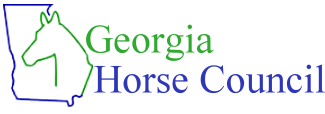Although we are just more than halfway through 2012, hay is already in short supply and hay stockpiles are expected to be even scarcer moving into winter. Hay prices are trending upward across the country, not just in one region as in past years, and we can expect them to continue to rise in the coming months. This is especially true across most of the central and eastern United States.
The hay shortage this year is due to several factors, but the most important is the widespread drought conditions. For much of this summer, two-thirds of the United States has been affected by drought and high temperatures. In some states hay fields are under irrigation, but most of the hayland in the country is only watered by rainfall. Without rainfall, hay growth has been reduced severely.

Hay supplies have been limited for several years, with drought conditions occurring in many regions in 2007, 2008, 2010, and 2012. In other words four of the last six years have been drier than normal in many states.
Take Texas for instance, the state that typically produces and exports the most hay. Last year’s severe drought in that state reduced hay production significantly, tripling prices and requiring hay to be trucked in from surrounding states to meet the needs of Texas’ 13 million horses and cattle. Thus, most Texas hay producers went into 2012 with short ¬supplies.
In addition to drought, farmers took many acres of hay out of production during the last two years because prices for crops such as corn and soybeans are at historic highs; farmers can usually make more profit from these crops than hay. As you might have noticed driving through the countryside, many hayfields have been sprayed out or plowed up and crops ¬planted.
With hay stocks down and prices headed up, what should horse owners do? Be proactive and secure hay now for the rest of this year and early next year. If you don’t have storage space for that much hay, then have your hay producer or hay broker hold back enough hay for your needs. This approach might seem extreme, but with supplies tight across the country, I expect many hay producers to “sell out” early. Even if your area has not been severely affected by drought, don’t expect that local hay producers will have hay to sell this winter. With the high prices staying strong and continuing to rise, many local growers will find markets out of state.
Remember to buy hay based on forage quality. With short supplies, a lot of inferior hay will likely sell for high prices this year. Ask for a hay quality test report before buying or have the hay sampled and submit the sample to a certified hay testing lab. Think about ways that you can feed less hay (e.g., by feeding hay alternatives and controlling hay wastage) to stretch out your supplies.
Concentrate feed prices are also rising with the price of grain crops. Corn (an energy component in many concentrate feeds) and soybeans (the main protein source in most concentrate feeds) prices have been at historic highs and they are expected to increase, as well.
In summary, make sure to line up your hay supplies now. Develop feeding systems to reduce wastage. Calculate the ration for each of your horses carefully for both health and economics.
Ray Smith, MS, PhD, is a forage extension specialist in the University of Kentucky College of Agriculture’s plant and soil sciences department.
Originally published in the September 2012 issue of The Horse: Your Guide To Equine Health Care.
https://cs.thehorse.com/blogs/across-the-fence/archive/2012/09/05/monitoring-hay-trends.aspx
